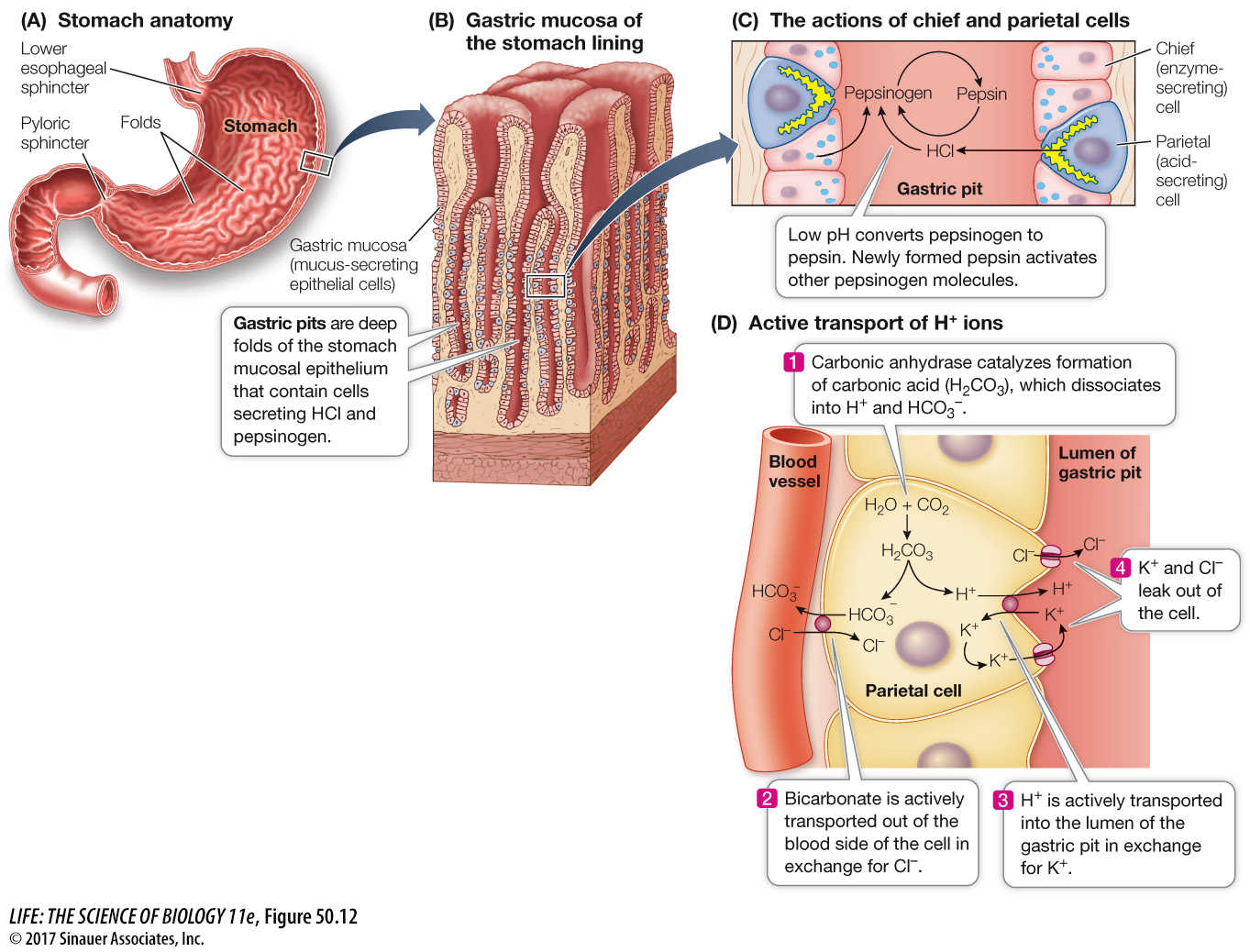Chemical digestion begins in the mouth and the stomach
Salivary glands secrete the enzyme amylase into the mouth where it is mixed with the food being chewed. Amylase hydrolyzes bonds between glucose monomers that make up carbohydrate molecules. The action of amylase is what makes a chewed piece of bread or cracker taste slightly sweet if you hold it in your mouth long enough.
The main role of the stomach is to store food and deliver it gradually to the small intestine so that digestion can occur more slowly than ingestion. The stomach produces secretions that facilitate digestion and also kill potential pathogens that are ingestsed with food. Gastric pits in the stomach walls (Figure 50.12A and B) have three types of secretory cells: (1) mucus secreting cells, (2) parietal cells that secrete hydrocholoric acid (HCl), and (3) chief cells that secrete the inactive proteolytic enzyme pepsinogen (Figure 50.12C). The low pH of the stomach juices has multiple functions. It kills most microorganisms that are ingested with food; it denatures proteins, making them more accessible to the hydrolytic actions of pepsin; and it converts pepsinogen to pepsin by cleaving away a sequence of amino acids that masks the active site of the enzyme. Newly activated pepsin activates other pepsinogen molecules, creating a positive feedback process called autocatalysis. Acid and the proteolytic enzyme pepsin could damage the stomach walls, but the mucus-

The production of hydrochloric acid (HCl) by the parietal cells of the gastric pits is quite impressive. It amounts to about 2 liters per day—
The enzyme carbonic anhydrase in parietal cells catalyzes the hydration of CO2 to H2CO3, which dissociates into H+ and bicarbonate ion (HCO3–). An antiporter transport protein (see Figure 6.13) exchanges HCO3– for Cl– on the blood side of the gastric pits, and an antiporter on the gastric pit side exchanges H+ for K+ (Figure 50.12D). However, K+ leaks out of the parietal cell down its concentration gradient. Thus the inward transport of K+ acts like an endless conveyer belt moving H+ out into the stomach lumen. Cl– also passively leaks out of the gastric lumen side of the parietal cells to maintain electrical neutrality.